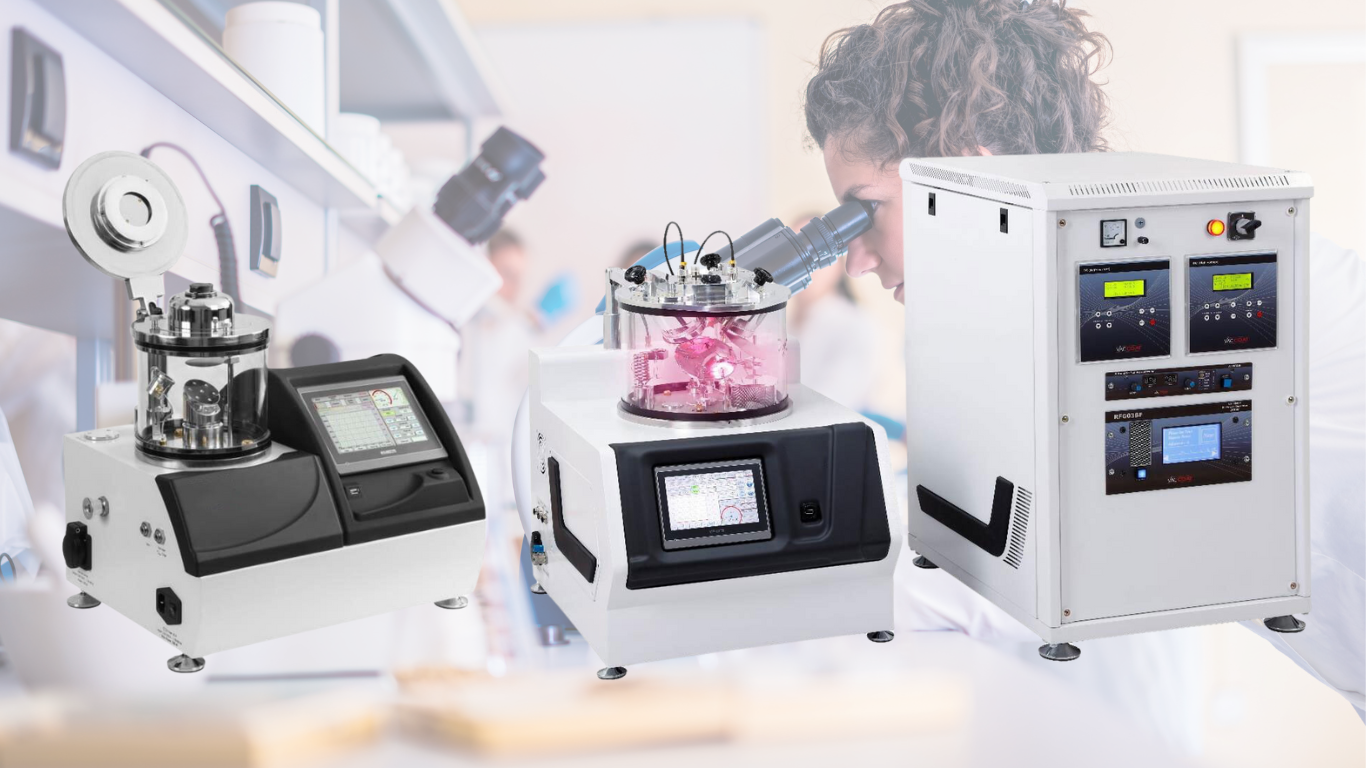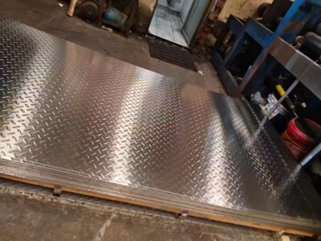If you work with Scanning Electron Microscopy (SEM), materials research, or microelectronics, achieving high-quality imaging and accurate analysis is critical. Certain materials, especially non-conductive or beam-sensitive samples, require an additional preparation step to improve imaging results
A Sputter Coater is an essential tool in SEM sample preparation, depositing a thin metallic coating that enhances conductivity, minimizes charging effects, and protects samples from electron beam damage.
What is Sputter Coating?
Sputter coating is a technique used to apply a thin, uniform layer of metal onto a substrate. This process involves creating a plasma discharge, where high-energy ions bombard a target metal, causing atoms to be ejected and deposited as a fine layer on the sample surface.
This method is widely used in SEM, Transmission Electron Microscopy (TEM), and other analytical techniques to improve imaging quality by reducing charging artifacts, increasing contrast, and protecting delicate samples.
How a Sputter Coater Works
The sputtering process begins when an inert gas, usually argon, is introduced into a vacuum chamber. A high-voltage electric field generates a glow discharge, creating plasma that bombards the metal target (typically gold, platinum, or chromium). The ejected metal atoms travel and deposit onto the sample surface, forming a uniform conductive coating.
This process ensures an even coating while maintaining the original topography of the sample, making it ideal for high-resolution electron microscopy.
Why Use a Sputter Coater for SEM?
Certain samples require sputter coating before SEM analysis to prevent image distortion and improve resolution. The main reasons for using a Sputter Coater include:
- Improved Electrical Conductivity: Non-conductive samples tend to accumulate charge under an electron beam, leading to distortions in imaging. A conductive coating provides a pathway for electrons to escape, preventing unwanted charging effects.
- Enhanced Secondary Electron Emission: Coating with metals like gold or platinum increases the emission of secondary electrons, improving image contrast and resolution.
- Protection Against Beam Damage: Beam-sensitive samples, such as biological tissues and polymers, can suffer from structural degradation due to prolonged exposure to an electron beam. A sputtered metal layer minimizes this risk.
- Uniform and Controlled Thin Films: Unlike manual application methods, sputter coating ensures a consistent and thin metallic film without altering the sample’s fine details.
By using a Sputter Coater, you can achieve clearer, more accurate SEM images, making it a necessary step for analyzing delicate or electrically insulating materials.
Applications of Sputter Coating
A Sputter Coater is widely used in various industries and scientific fields where high-precision imaging and material analysis are essential. Some key applications include:
1. Scanning Electron Microscopy (SEM) Sample Preparation
Most non-conductive materials, such as ceramics, polymers, and biological specimens, require a conductive coating before SEM imaging. Without it, the electron beam creates charging artifacts that distort images. Sputtering a thin layer of gold, platinum, or chromium resolves this issue, ensuring clear imaging.
2. Microelectronics & Semiconductor Industry
In microchip manufacturing and nanotechnology, sputter coating is used to deposit thin metal films on electronic components for better conductivity and circuit protection. This process is critical in failure analysis and component inspection under SEM.
3. Materials Science & Metallurgy
Researchers analyzing metallic alloys, composites, and coatings use sputter coating to enhance electron contrast and microstructural analysis in SEM studies. It also improves X-ray spectroscopy (EDS/EDX) results, enabling precise elemental analysis.
4. Biological & Medical Sciences
Soft and moisture-rich biological specimens, like cells, tissues, and plant materials, degrade under the high-energy electron beam of an SEM. Coating these samples with a thin layer of gold or platinum enhances imaging without altering surface structures.
5. Nanotechnology & Advanced Materials Research
Ultra-thin coatings are crucial for analyzing nanomaterials, graphene, and carbon-based structures. Sputtering with fine-grained metals like iridium or chromium allows for high-resolution imaging with minimal electron beam interaction.
Types of Metals Used in Sputter Coating
The choice of sputtering material depends on the sample type, imaging requirements, and resolution needs. Common metals used in sputter coating include:
- Gold (Au): Offers high conductivity and is widely used for general SEM applications.
- Platinum (Pt): Provides finer grain size than gold, suitable for high-resolution imaging.
- Gold-Palladium (Au-Pd): An alloy that prevents clustering, producing a uniform coating with better secondary electron emission.
- Chromium (Cr): Used for ultra-thin coatings, often in Field Emission SEM (FE-SEM) for higher resolution.
- Iridium (Ir): Produces extremely fine-grained coatings, ideal for nanomaterial analysis.
- Silver (Ag): Has high conductivity and can be removed easily, making it useful for temporary coatings.
Choosing the right metal ensures that you achieve optimal imaging results without compromising sample integrity.
How to Choose the Right Sputter Coater
Selecting a Sputter Coater depends on factors such as vacuum level, target material, deposition rate, and sample type. Consider the following:
- Vacuum Level: Standard rotary vacuum pumps work well for gold and platinum coatings, while turbomolecular high-vacuum systems are needed for chromium or iridium sputtering.
- Target Material Compatibility: Ensure that the coater supports multiple metal targets for different applications.
- Deposition Control: A well-designed magnetron sputter head provides precise, low-energy deposition, reducing sample heating and damage.
- Grain Size Control: Finer grain coatings (using metals like iridium or chromium) are better for ultra-high-resolution SEM imaging.
- Ease of Use: Automated and user-friendly interfaces improve repeatability and efficiency in research and production environments.
If you require high-resolution SEM imaging, choosing a versatile and high-precision Sputter Coater ensures optimal results.
Final Thoughts
A Sputter Coater is an indispensable tool for SEM sample preparation, ensuring clear, high-contrast imaging for non-conductive and beam-sensitive materials. Whether you work in materials science, nanotechnology, biomedical research, or semiconductor analysis, sputter coating enhances imaging quality while protecting delicate samples.
Choosing the right coating material and deposition method allows you to optimize SEM performance, improve analysis accuracy, and achieve reliable results.
If your work involves high-resolution imaging, investing in a high-quality Sputter Coater ensures that your samples are prepared for the best possible electron microscopy results.



